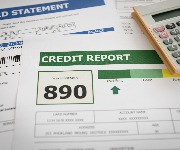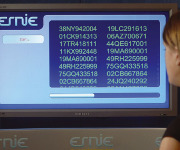Twitter banking scam - how to stay safe

Your bank's 'official' Twitter account might actually belong to scammers...
Criminals are posing as banks on social media in what could be the sneakiest scam yet.
They trick unwitting customers into visiting bogus websites or clicking on malware links so that the fraudster can steal their financial details.
It's been reported that three fake NatWest profiles appeared online last week, with scammers contacting customers and sending them links which look almost identical to the bank's website.
One of the accounts, @Natwest_HelpS, tweeted users who had already used the real account, @Natwest_Help.
Others have appeared, including this subtle @Natwest_HelpT handle.

Source: John Northants / Twitter
Metro bank was also impersonated on Twitter last September with the handle @AskMetroBank.
Major banks say they have seen instances of fraud like this, but victims of this crime are at risk of being denied a refund.
Check your credit report for any suspicious activity
Tweeting for help
More and more people are turning to social media for customer service, with Twitter being particularly popular.
Those who have used it say it’s an efficient way to get a response to basic complaints as it’s on such a public platform.
How to spot a fake
It can be hard to tell, but there are a few signs to help you suss out whether or not a Twitter account is a fake.
First, look out for a blue tick - it will appear to the right of the username. Celebrities, public figures and larger companies and organisations will have a blue tick to show that their account is genuine.
If you’re with a smaller bank or building society, be careful; they may not have the tick.
Charter Savings Bank, Yorkshire Building Society and Clydesdale Bank aren’t verified on Twitter.
We've had reports of fake accounts contacting customers. Report any suspicious activity to phishing@natwest.com pic.twitter.com/Oql3D3i68j
— NatWest Help (@NatWest_Help) September 8, 2016
Have a look at the number of accounts following and followed. If there’s a big difference between the number of followers an account has and the number following, this could spell trouble.
An established company should have several thousand followers so if they have suspiciously few, steer clear.
If the user is posting the same links and messages over and over again, then it’s best to avoid them.
Check any URLs by hovering your mouse over them before you click will help you pinpoint whether a web link is real or fake.
And as we've already seen, variatons between Twitter handles can be slight, so make absolutely sure you're contacting the right person before you tweet anything or click on links.
If you fall victim to this scam, contact your bank immediately and report it to Action Fraud.
Where should you check your credit report? loveMONEY can help you decide
Watch out for these:
Booming new scam that's ramping up your insurance bill
Most Recent
Comments
-
Why isn't email in the list to contact customer services? Anyway, never, ever, click on a link in a message. Always go to the website you know and discuss what was in the message. Simples.
REPORT This comment has been reported. -
"How to spot a fake" - easy, it's on Twatter. You really would have to be a numpty to use Twatter or Friendface to access bank help!
REPORT This comment has been reported.
Do you want to comment on this article? You need to be signed in for this feature









14 September 2016